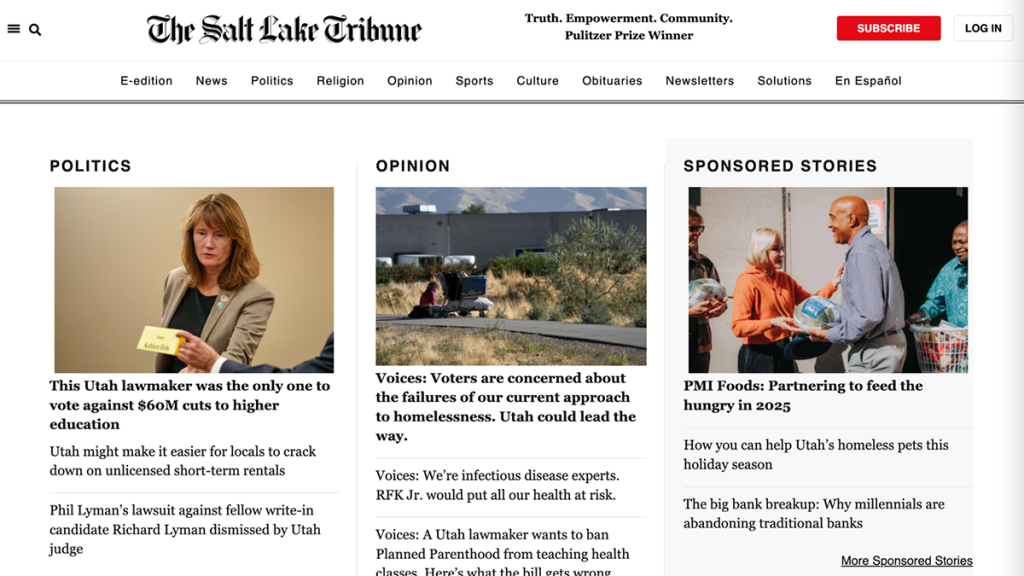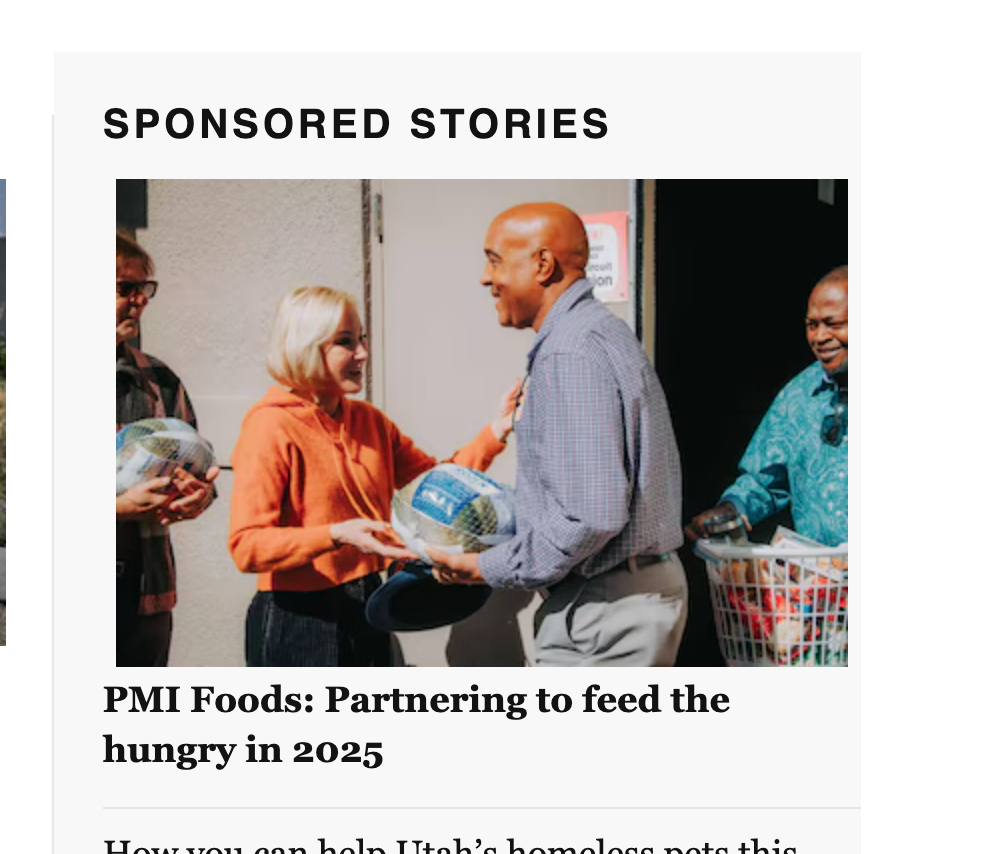
A visualization of our homepage section of sponsored stories available to readers.
Maximizing revenue with sponsored content: Best practices for article pages
How newsrooms can leverage sponsored content while staying compliant with Google’s policies
Sponsored content has become a crucial revenue stream for digital publishers, allowing newsrooms and online platforms to monetize their content beyond traditional advertising. However, improperly implemented sponsored content can negatively impact a site’s reputation, particularly in search rankings. Google’s spam policies provide clear guidelines on how to manage site reputation and prevent deceptive practices.
In this article, we’ll explore the role of sponsored content in article pages, best practices for implementation, and how to stay compliant with Google’s policies.
The role of sponsored content in digital publishing
Sponsored content is a form of native advertising where advertisers pay publishers to distribute content that aligns with their brand message. However, in traditional sponsored content, my newsroom, The Salt Lake Tribune, does not write the content. In our case, either the advertising company writes the content or there is a third party that creates the content for them. Unlike traditional display ads, sponsored content is designed to blend seamlessly with editorial material, offering value to readers while promoting a product, service, or brand. For publishers, integrating sponsored content into article pages can provide a steady revenue source beyond standard ad placements. It can also lead to higher engagement compared to banner ads, as sponsored articles often mimic editorial content in format and tone. Additionally, it provides advertisers with a more organic and informative way to reach audiences.
The Tribune incorporates sponsored content as a way to support journalism while providing businesses with a platform to reach engaged readers. These articles are clearly labeled as sponsored, and cover a range of topics, from local events to industry insights, offering valuable information while maintaining transparency with readers.
To explore the Tribune’s sponsored content and see an example of sponsored stories, visit The Salt Lake Tribune’s sponsored content.
Google’s stance on sponsored content
Google’s spam policies, specifically regarding site reputation abuse, emphasize the need for publishers to maintain control over content quality. One key concern is the misuse of third-party content on high-authority domains. According to Google’s guidelines:
Websites should not host third-party content that is intended solely to manipulate search rankings. Publishers must ensure that sponsored content is clearly disclosed and does not mislead users. Affiliate links or paid promotions should use the appropriate rel=”sponsored” or rel=”nofollow” attributes within the code to prevent artificial ranking manipulation. Google actively penalizes sites that allow low-quality, paid content to appear under their domain without oversight. This means that even if a publisher is paid to post content, they are still responsible for its quality, relevance, and compliance with Google’s guidelines.
Best practices for sponsored content on article pages
To ensure compliance and maintain credibility, publishers should adopt clear and transparent labeling practices. Transparency is key to maintaining trust with readers and search engines. Sponsored content should be prominently labeled as “Sponsored,” “Paid Content,” or “Advertiser Content” at the beginning of the article. Misleading terms like “Partner Story” should be avoided unless they clearly convey that the content is paid. Additionally, disclosures should be visible and not hidden behind expandable sections or small fonts.
Another critical practice is the proper use of nofollow and sponsored tags. Sponsored content should not pass PageRank to prevent search ranking manipulation. Publishers should add rel=”sponsored” to all links within sponsored content and avoid do-follow links in paid posts, as this violates Google’s link scheme policies. Advertiser-provided links should be reviewed to ensure they are relevant and not linking to spammy or low-quality sites.
Even though sponsored content is paid, it should still adhere to editorial standards. Publishers must vet all sponsored content for accuracy, relevance, and originality. Avoiding overly promotional, spammy, or low-value content that does not serve readers is essential. Additionally, maintaining separation from organic editorial content helps avoid misleading users. Sponsored content should be visually distinct from regular editorial articles, using a different background color, font style, or placement. A byline that states the content is produced by or in collaboration with the advertiser can further clarify its nature.
Consequences of Non-Compliance
Failure to comply with Google’s guidelines can result in serious repercussions, including manual actions against a website, leading to reduced visibility or removal from search results. Additionally, misleading content can damage a publication’s reputation and result in reduced advertiser interest, as reputable brands prefer to associate with transparent and ethical publishers.
Looking Ahead on Sponsored Content
Sponsored content on article pages can be an effective revenue strategy when executed correctly. Publishers must ensure clear disclosures, proper tagging, and high editorial standards to comply with Google’s policies and maintain their reputation.
By following best practices, digital publishers can balance monetization with credibility, ensuring a sustainable approach to sponsored content in the ever-evolving media landscape. Our newsroom’s experience with sponsored stories throughout our website illustrates how these strategies can be applied while maintaining the trust of our audience and the integrity of our content.
Cite this article
Partida, Alex (2025, Feb. 6). Maximizing revenue with sponsored content: Best practices for article pages. Reynolds Journalism Institute. Retrieved from: https://rjionline.org/news/maximizing-revenue-with-sponsored-content-best-practices-for-article-pages/

